Magazine
The Midway Generation
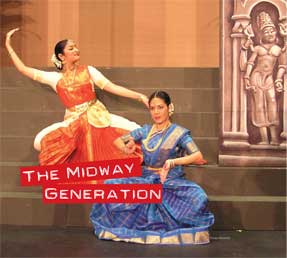
They have spent half their lives outside of India in America.
When Swadesh Chatterjee came to America from the small town of Somamukhi in West Bengal, he carried just $35 with him and degrees in engineering and physics. In true American style, he created a multimillion-dollar company. Then, in his 50s, he sold it to dedicate his time to educating American policymakers about India and was awarded a Padma Bhushan from the Indian Government for his efforts. At 50, Sital Jain of Westchester, N.Y., gave up a successful full-time career in the construction business to take off on unknown trails to the North Pole and the South Pole, even to the rarely traveled ice-bound Antarctic, which can only be accessed by nuclear powered Soviet breaker ships. Adventure is his new mantra and he is now headed to the Gobi Desert in Mongolia and to Siberia.
In her 40’s, Anju Bhargava of Livingston, NJ, sidetracked from her career in corporate America to explore the possibilities and pleasures of community building. This led her to interfaith dialogues and a completely new avocation as the first female Hindu pujari officiating at marriages and prayer ceremonies and teaching audiences about Sanathana Dharma through PowerPoint presentations. This generation of Indian immigrants now in their late 40s and 50s is the first in substantial numbers to have spent at least half their lives outside their homeland and thus experienced two worlds on parallel tracks. This is the generation that came to the United States in the 1980s and 1990s mostly as students or young brides to start a new life in the New World. All these years it was about getting degrees, establishing careers and a family, and then seeing the children leave the nest to start careers and lives of their own. Now this group of 250,000 Indians has arrived at an intersection point. What is it about midlife that seems to give people permission to transform their everyday lives and rewrite their destinies? Is it that newfound freedom, that sense that all their duties have been fulfilled? Many have arrived at a comfort level in their careers, and suddenly life stretches ahead, an empty canvas waiting to be written on. It is surely an exciting age and time for the quarter million Indians aged 45-55 to be sitting on the cusp of midlife. Once 50 prepared you for retirement; in India 55 is still retirement age. Now 50 seems to be the new 40 as medical advances, health consciousness and active lifestyles make retirement and the rocking chair seem quite distant. Hobbies suddenly become vocations and lifelong passions in this second act.
Of course, not every immigrant can take off on flights of fancy. For the vast majority, life is just more of the same as they remain embedded in their careers and the necessity of earning a living. They do not have the luxury of transforming their lives dramatically; work still pays the bills. But for those who have “made it,” or arrived at some semblance of financial security, there is the chance to experiment with new lifestyles. Not only are they in mid-life, they are also midway between lives in two countries – India and America. If they have fond memories of childhood and youth in their hometown, they now have equally golden memories of marriage and parenthood in America. If India saw the birth of dreams and education, America is where they were realized – or dashed. Life for immigrants is a hodgepodge of thoughts and memories: you can walk on the New Jersey waterfront and recall the River Yamuna, viewed from a hurtling train headed from Delhi to Jaipur. Or you can stand on the banks of the Hudson and flash to the curve of the Queens Necklace seen from Bombay’s Marine Drive. New York morphs into Bombay and back again. Life becomes a montage of homes and encounters on two continents. So where is home? Where do their loves and loyalties really lie? Is the call of India fading or is it just as evocative as ever? What place does America have in their affections? Do they see themselves as Indian or American or a bit of both? It is sometimes an opportunity to re-invent oneself.
In 2002, at the age of 45, Vivek Wadhwa, chief executive officer of Relativity Technologies in Raleigh, N.C., gave up his spiffy corporate office and decided to invest in a fun Hollywood-Bollywood movie. And then he changed careers yet again to become a professor at Duke University. Wadhwa came to the United States at the age of 23 to join Xerox. His career arc took him to First Boston and Seers Technology before he started his own company, Relativity Technologies, which helped companies modernize their computer systems. In the heady days of the dotcom boom, it really took off. Then the bubble burst. Recalls Wadhwa, “There was lots of turbulence, but we managed to turn the company around.” Wadhwa went on a Caribbean cruise to celebrate with his family and what happened next changed his life completely. He recalls, “I started having back and chest pains. I was only 45. I thought I was indestructible. I had never been to the doctor. I was in very good health and used to even workout on the cruise with my son. I thought I had worked out too hard. I didn’t believe I was having a heart attack.” As the pains became more severe, Wadhwa checked into the hospital to learn that he was in the middle of a massive heart attack. He says, “It was like the Twilight Zone.” Things got worse, as the investors tried to take over the company and an ugly corporate battle ensued. Wadhwa recognized he had come to a fork in the road. “My wife was very stern with me. It was basically the choice of either continuing in the tech world, fighting the battles and possibly having a second heart attack or doing something different for a living.” Wadhwa exited from the tech world not knowing what he would do next. Meanwhile, his high profile tech life had taken a toll on his family life. His son Vineet wanted to join Bollywood and become a movie star. Says Wadhwa, “It was a very different period in my life. I now had time on my hands and I also had to deal with the fact that I hadn’t spent time with my children – that’s what happens when you’re a tech star! Things were going out of control so I decided to focus on doing what my son wanted. Basically he wanted to be a movie star so I thought let’s take him into the film industry and show him what it’s all about.” He invested in a Bollywood production on condition that his son could hang out on the sets and be a part of the process. The result was the Hollywood production My Bollywood Bride shot in Bombay. “By the time we had spent three weeks in Bollywood and hung out with all the movie stars and gone to all the Bollywood parties, he was so disenchanted he wanted to go back to the professional world in America. I cured him by throwing him into it.” Wadhwa too was cured of his own Bollywood fascination after this one time fling, which lasted about a year. He decided that being a CEO meant too much pressure, long hours and being part of the tech rat race. So he took up a whole new role as an executive in residence in the Engineering Management program at Duke University in Durham, N.C. He is also a regular columnist for BusinessWeek Online and is relishing this new phase of his life.
Did all these changes have anything to do with him reaching the big Five-O? “The answer is yes, because when you’re young, your goal is to make money, to work hard and to focus on career,” he says. “After my heart attack I looked at my achievements and at my son drifting off course. What matters most is your family. It’s also about giving back as opposed to just taking. Now a lot of my time is devoted to giving back. Duke University isn’t paying me a salary. I’m doing this because I want to be doing this.” Even though he’s only lived in India for one year of his life, it still tugs at him. Says Wadhwa, “You never leave India behind. I go to India quite often, I see myself as an Indian and as part of the Indian community. What happens, when you’re brought up abroad in the Foreign Service, you become more Indian than the Indians are! You have this very glorified view of India – you basically leave all the bad behind and just hear only the good stories. You identify even more strongly with the country than even the regular Indians do.” As to his nationality, Wadhwa says, “I am an Indian American. I am an American citizen with Indian heritage so I live in both worlds. I take pride in being Indian.” But he also counts himself as an American. Says Wadhwa, “There’s no conflict here. That’s the advantage of being an American. You don’t have to pick one. You don’t have to leave your culture and your values behind to be an American citizen. That’s what’s so great about America.” He is toying with living in India. “My wife and I are amazed at how much India has changed. We are actually talking about maybe going back and settling in India one day,” says Wadhwa. “That looks like a possibility, because India now has all the things that we have in the west, all the comforts plus all the advantages of India.” For Sital Jain, life was one big construction site, from India to America. After working for three years in construction companies in UK, he immigrated to the United States in 1970. “I worked for a real estate development company in Manhattan for seven years and we bought buildings and renovated them and managed them ourselves,” he recalls. He later moved to another company in Westchester, rising to vice president and becoming partner. The business was sold in 2003 and the partners decided to pursue their own interests. With no money constraints or business to worry about, Jain decided to pursue his two childhood passions – show business and adventure travel. “As a college student growing up in Gurgaon, I would often travel to Delhi by bus to catch the latest Raj Kapoor and Nargis film and was always fascinated by show business,” he says. “I was also into travel, but in those days the travel was just by bus or train with college friends traveling to Simla or Manali, often going on hiking trips.”
To satisfy the show business urge, Jain has invested money in Hiding Divya, a feature film made by young Indian American filmmakers in New York and starring Madhur Jaffrey. He’s been on the location shooting a few times and plans to be involved with more films. It is, however, his urge for travel that has really taken him to some offbeat places. Adventure travel is his private pursuit in which his wife and children don’t get involved, and his favorite trips have been to the North and South Poles. “The adventure ship goes as far as it can go – almost 700 miles away from the South Pole,” he says. “For ten days we go through very rough seas near Antarctica and do two hikes a day, which are fairly steep over snow, ice and volcanic ash. You have to wear several layers of clothing. Once we are dressed, we look like Eskimos!” He says, “You see large penguin colonies. Sometimes you see 5,000- to 10,000 penguins in one colony and then you also see lots of seals lying on the ice. It’s very exciting, when we get a sighting. You feel you’re in heaven. You see a lot of ice and a lot of snow so for 10 days you really see a lot of whiteness.” At an age when people start thinking of sitting retired in a rocking chair somewhere, Jain is into adventure travels? He says, “No, if you sit in a rocking chair, you’re just waiting to die, I guess!” “The adventure travel keeps me fit. There are millions of places I’d like to go. Next year I’m planning to go to Siberia and Mongolia, including camel rides through the Gobi desert.” Having spent half his life in America, does he see himself as an Indian or an American? He says, “I see myself as an Americanized Indian.” So the Indian connection always remains? “Yes, yes, yes – definitely. In the heart of hearts that connection never dies.” Jain became an American citizen five years after coming to America. He did not feel any pangs about surrendering his Indian passport: “There are many advantages of an American passport. You can travel all over the world mostly without a visa. It was also the right thing to do. If you make your living in this country, you should belong to this country.” He does not see himself settling down in India. “99.9 percent Indians who came in my time never go back to live in India, because they are now accustomed to a different environment, different climate, different quality of life and their children are here, their daughters-in-laws are here, their grandchildren are here. Just 0.1 percent is daring enough to spend a few winter months in India. But I don’t know anybody who will really go back to India.” He adds, “If you go back, you won’t have your friends or your circle there. Our parents have passed away – and they were the link to going back. I have really no interest in going back, except for the weddings of nieces or nephews, and then I definitely go back, that’s my excuse to go to India.” But then are those who carry India to America with them. The seeds of Anju Bhargava’s interest in community building were sown when she lived in India. Her father was with an oil company and the family lived in many parts of India, from Lucknow to Calcutta to Madras. She learnt first hand about diversity, living in many different cities. Bhargava got an MBA from Rutgers University and embarked on a successful banking career in New Jersey. But she was always a community activist at heart. As a single mother, her interest was always focused on her daughter Anisha: “How do I help my Indian American child to grow up in this environment so she can benefit from both those cultures?”
By the time her daughter went to college, Bhargava’s began devoting much more time to community activities. “It’s a continuum. I’ve been doing cultural activities from festivals to classical literature so one day it all converged – the big change is I see it all coming together and simplifying and synthesizing it,” says Bhargava. What were earlier just interests and hobbies are now coming center stage. Her interest in Hinduism escalated after she became the Hindu representative at Interfaith Clergy Association in New Jersey. She says, “My focus has been on integration, presenting a balanced perspective and so we developed the Asian Indians in Livingston Bhajan Choir group.” She is now a Hindu pujari or priest, actually performing pujas, probably the first woman in New Jersey to do so – and that too with a PowerPoint presentation of Sanathana Dharma, with explanations in English! She says, “The transformation for me is bringing all that knowledge and all these experiences and selecting the areas where I can be most effective. We need bridges and I feel I’m part of that, bringing the traditional rituals into contemporary life and making them more relevant.” Her interest in Hinduism had been developing over the years as she tried to give her daughter the best of both cultures: “I grew as my daughter grew. I would say actually for me doing pujas took 25 years of preparation. Most people go from ritual to philosophy. I have gone from philosophy to ritual. Puja has brought the philosophy to life for me.” And yes, as a pujari, she gets a ‘Dakshana’ or offering, which she donates to charitable causes like cataract surgeries in India. So although she’s not in India, she is doing something that brings India alive to people here. Where does she place herself on the cultural landscape? She says, “We have so many different identities, but right now I am probably comfortable with my American identity and my Indian identity. I feel I’m both, I’m not either or.” Bhargava struggled with taking out U.S. citizenship: “That was a big thing for me. At that time there was no concept of having two passports. At this point I feel I’ve not given up anything, I don’t feel I’m split in any way.” While Bhargava has brought Vedic rituals to her New Jersey neighborhood, Dr. Tulasi Polavarapu has taken her medical expertise back to her hometown in Andhra Pradesh. An obstetrician and gynecologist, Polavarapu came to Milwaukee in 1972 with her husband, an orthopedist. The early years were spent in residency training. The couple moved to New York where they both established their private practices in 1978. By the 80’s they were well settled and became involved in social work with local organizations. Both their children went on to become physicians. When she was in her 50’s, Polavarapu felt established enough to devote more time to her childhood passion: social work: “I had this burning desire since childhood and I used to do small things when I was a student in India, like starting a poor students fund. I was the secretary of the social service department in medical school, and we’d go to the villages every Sunday to see patients and then distribute medications to them.”
Both husband and wife are now involved in health and education in India. They started a free school in their village, which serves 450 children from three neighboring villages. They also wanted to be involved in something related to health related. Says Polavarapu, “That’s what we were trained in at medical school and I felt we should give back something to the state. The whole of Andhra Pradesh doesn’t have a cancer hospital at all and we thought that was what was lacking.” Along with several other New York physicians, the Polavarapus started the Indo-American Cancer Organization and funded a cancer hospital, the Indo-American Institute and Research Center in Hyderabad. The land was donated by the state of Andhra Pradesh and physicians from New York donated $2 million for the equipment. The organization has also funded a mobile van with state of the art equipment for cancer detection, which goes to villages in remote parts of Andhra Pradesh. The Polavarapus travel to India four times a year to serve for 6-7 weeks at a time. Even after 34 years living in America, Polavarapu feels no struggle about her identity: “I feel I belong there. I’m happy that this country gave me something to do there. I don’t know how much I would have done if I had stayed on in India. I would have done something, but money-wise I think America gave me a marvelous support.” She adds, “I feel a humbleness and a gratitude for America. But still, since I was born and raised there, and my moral and ethical values are there, I feel still I belong to India.” In fact, both her children, though born here and schooled here, went to India for their medical studies. For them, the Indian connections are strong too.
Polavarapu can see herself moving back, especially since she plans to start a HIV program in Andhra Pradesh. Won’t she miss America and her children? She says, “There’s globalization. Right now I’m going four times a year to India. I can come four times a year to America! I can talk to them everyday on the phone. We can reach here in 16 hours if we want to.” Many women in their late 40’s and 50’s are almost getting a second wind. There is almost a role reversal: men who have spent their lives traditionally in the work force, are slowing down, taking pleasure in concentrating on golfing or even cooking, which for many is new, relaxing – even exotic. They are all set to loosen their neckties. Ramaa Bharadvaj of Los Angeles, Calif., who came to the United States in 1978 from Chennai, is director of Angahara Dance Ensemble and is a choreographer,writer, dance activist and on the dance faculty at Orange Coast College and Pomona College. “When I hit my 40’s that’s when the turmoil really happened. The midlife crisis everyone goes through, but my arts have really been my root, my ground,” she says. “Now the question was is my art supposed to mean me. Am I supposed to be an immigrant teacher teaching immigrant children, so at that point my role in the community changed and I saw myself more as an artist serving the artist community. I stepped out more into the larger American community to become more of a spokesperson, not only for my culture but for dance on the whole.” When the arts council was put on the butcher block, Bharadvaj initiated a movement to keep the arts council alive, holding rallies and writing about it extensively. So in midlife instead of slowing down, she became much more active. Does she consider herself Indian or American? She says, “I’m Indian by my culture, but I think if you look at Americanism as being the freedom to explore – then I’m all American!” America opens up closets where music, golf, academics or even female pujaris become exciting possibilities. For most Indians, the U.S. Senate’s recent approval of the nuclear co-operation deal between India and America was merely welcome news. But for Swadesh Chatterjee it is all very personal, as he has been working hard to see it become a reality. The engineer who came to America as an immigrant with just $35 is now a strong political advocate for Indian American relations. Chatterjee worked as an engineer for nine years in Calcutta before coming to North Carolina to work for Brandt Instruments as head of engineering. He ended up buying the company in 1984 and sold it in 1992, staying on as CEO till 2000. Chatterjee then turned his attention to his real passion, which is community work, working with TiE and building relationships. In 1998, he was elected national president of Indian American Association for Political Education (IAFPE), the year India had its nuclear test and Indo-US relationship was at an all-time low. Chatterjee took the challenge to improve the relationship, to help lift the sanctions against India and convince policy makers. He worked closely with Senate Foreign Relations Committee Chairman Jesse Helmes and was amongst the group accompanying President Clinton to India in 2000. Does he see himself as an Indian or an American, and was it hard giving up his Indian passport? “I always say I’m the child of two mothers – Mother India, whom I can never forget,” says Chatterjee. “I’m out of India, but India is never out of me. So the passport is just a symbol. But inside me I’m so Indian that my passport cannot describe me. I’m Indian inside out. “So though I’m an American citizen, I’m a true Indian and think about my country all the time. Yet at the same time, my allegiance is to this country, which gave me my livelihood, which gave the opportunity to my children who are American. I am patriotic as an American and never forget my motherland.” He sees himself dividing time between his two countries and remains hopeful about the nuclear co-operation deal, because he feels it’s not just about nuclear energy, but a strategic relationship between the United States and India for the next 50 years. He says: “Our community has always been admired as a model minority, but we have now transitioned to a community that can really make a difference in influencing the policy of this country. So we became the true Americans when the vote passed in the Senate.” They can really move easily between India and America as their two homes? “Absolutely right! Free flow of both knowledge and human beings. A true migration between the two counties.” |



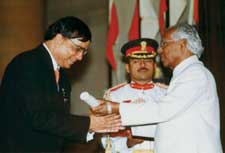
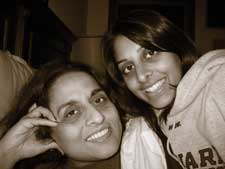
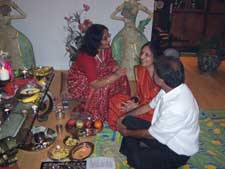

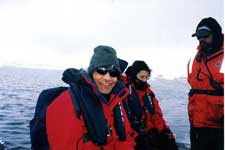

You must be logged in to post a comment Login